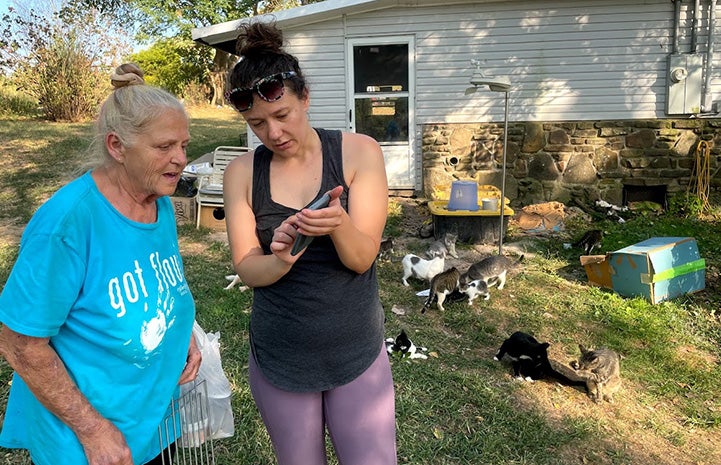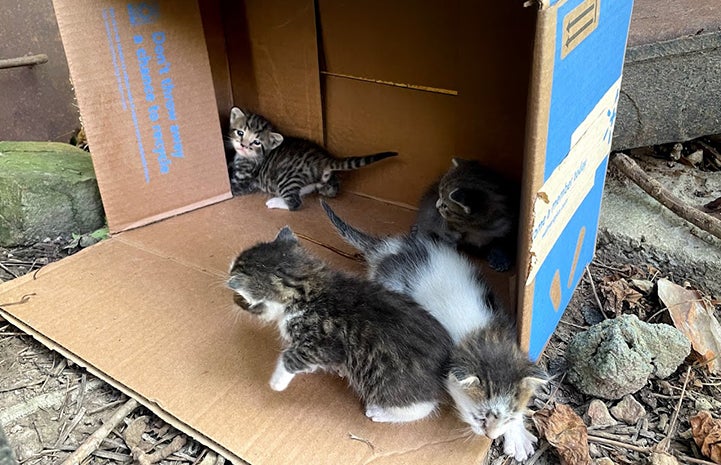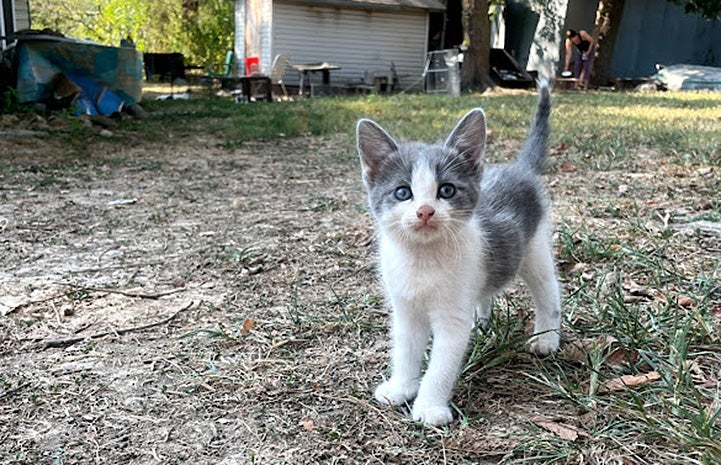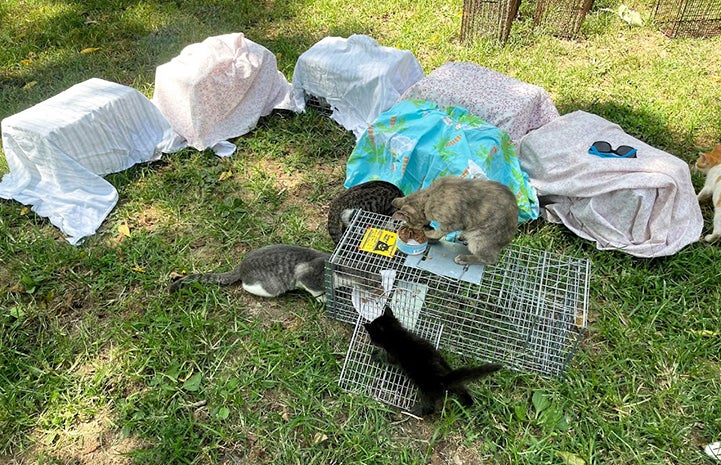Collaboration helps a big colony of cats and their caregiver, too

Linda Vaughn is a cat lover. For years she's lovingly cared for the cats roaming her farm in the foothills of Northern Arkansas. When one gets sick, she tends to them until they’re better or, if need be, she’ll take them to the local vet. Despite being disabled and living on government assistance, she always makes sure the cats are well-fed, warm and healthy.
“I can’t deal with a person that doesn’t like cats,” says Linda, who estimates about 60 cats in the colony on her farm. But through the years the total number of felines she’s helped is in the hundreds. And she’s named them all.
Linda’s neighbors are well aware that she loves cats ― so much so that she’ll sometimes walk outside in the morning to find that cats and kittens have been dropped off in the driveway. Linda never turns any of them away. She’ll care for the kittens until they’re ready to be adopted. Then she’ll find homes for them or enlist help from the local shelter.

[Fast action saves two kittens on the brink]
Despite all of Linda's dedicated work, no amount of love or quality care was going to stop the cats from breeding. And the more her colony multiplied, the more guilty she felt for not getting the cats spayed or neutered. Every time she thought about calling a shelter or rescue group to ask for help, the more worried she was that she’d get in trouble ― or worse, that the cats would be taken away.
It was Linda’s son-in-law who convinced her to call Wilson Zoo, a cat rescue group in Garfield, Arkansas. He told her that once they saw how much she does to keep the large colony healthy and happy, there was no way they’d remove them from the property.
He was right. But Wilson Zoo, an all-volunteer organization, would need help to spay and neuter that many cats. So, they contacted Best Friends in Northwest Arkansas.

Coming together for TNVR
Kathleen Lehman, a coordinator for Best Friends, received Wilson Zoo’s request for help with TNVR (trapping, spaying or neutering, vaccinating and releasing the cats back into the large colony). She and Madison Bigelow, Best Friends supervisor of community engagement, made the 45-minute drive to Linda’s farm and began trapping.
“We got eight cats on our first visit," says Kathleen. "We were excited to meet Linda and work with her to make a plan to help all her cats lead happier, healthier lives.” The trapping actually wasn't that difficult, she says. “The cats were all around. It was easy to get them into the traps.”
Next, they had to drive the cats to the home of a Best Friends volunteer who kept them in a warm garage and cared for them overnight. The next day they were picked up and brought to Spay Arkansas, where they were spayed or neutered, ear-tipped and vaccinated, before another volunteer picked them up and returned them to Linda’s farm.

Supporting outdoor cats where they are
Over the course of a few months, teams from both Best Friends and Wilson Zoo visited the farm to trap nearly 60 cats. Eventually, numbers were reduced to where those still needing spay/neuter could be trapped by Linda herself. And she has.
Now that Linda knows how to trap cats (and has a team at Wilson Zoo and Best Friends to help her), she is feeling relieved and grateful. In fact, she says it’s hard to find the words to express how much gratitude she has for the two organizations that came together to help her beloved colony of cats. "They changed my life,” she says. “All these volunteers, they worked so hard. I better hush or I’m going to cry.”
Kathleen says it’s this kind of collaboration, along with community-based sheltering, that keeps cats out of shelters and where they belong ― in this case, on Linda’s farm where they have everything they need to thrive.
[Volunteer teaches foster cat to ‘talk’]
“As long we as a community can help get those cats spayed or neutered and vaccinated, we can help them live better lives without needing to remove them from their homes,” says Kathleen, noting that many cats living outdoors their entire lives would not do well in an indoor environment. “Supporting them where they are in the place they call home is the best thing to do for the cats and their humans.”
Linda still keeps a watchful eye on the cat colony at her farm. Only now she doesn’t have to worry about the cats breeding or being taken away. And she still helps cats left on her property (although it’s happening less often now that she’s installed a camera on the grounds).
Linda is on the prowl for one more cat who still needs to be spayed. “I’ve got one mama cat left,” she says. “The last one is always the hardest, but I’ll catch her.”

Support cats in your community
Volunteer with your local shelter to help outdoor cats where you live.
Read more
2022 animal shelter crisis impact: Dallas Animal Services
Bunny helps a family heal from loss
Loving a special cat in hospice leads to adopting another
Photos by Kathleen Lehman